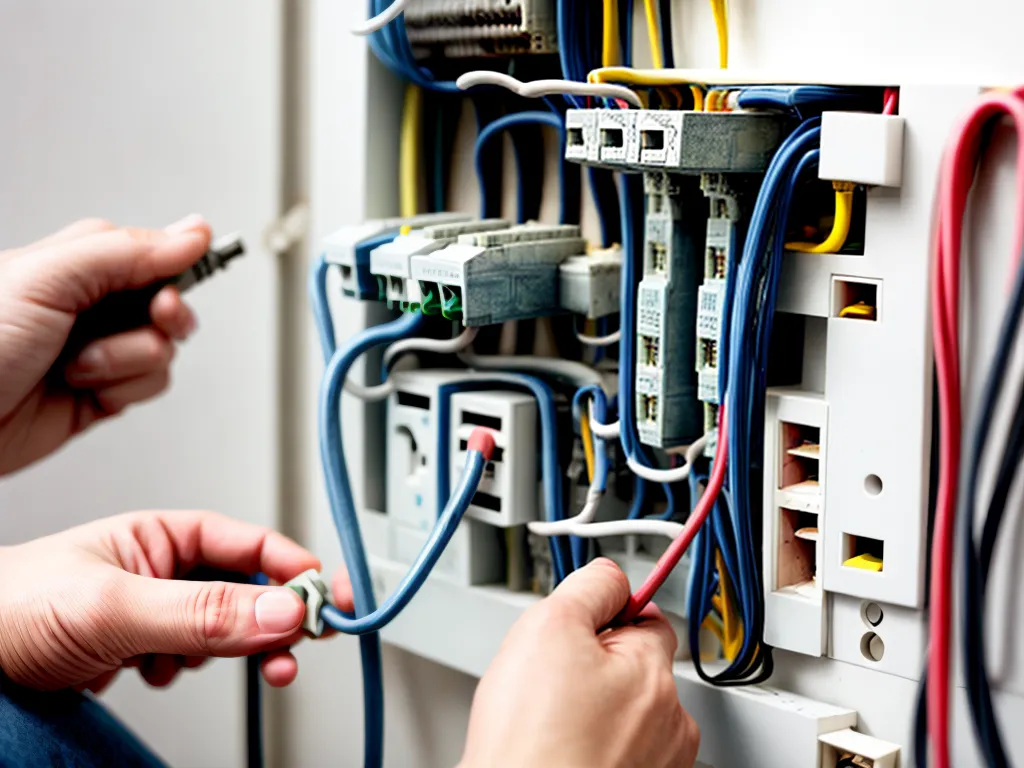
How to Rewire Your Home's Electrical System Yourself on a Budget
Assess Your Electrical Needs
Before I attempt to rewire my home's electrical system, I first need to thoroughly assess my electrical needs. This involves taking stock of all the electrical appliances and devices in my home and considering any future additions or upgrades I may want to make. I should evaluate things like:
-
How many circuits my home currently has and whether that is sufficient.
-
The amperage rating of each circuit.
-
Whether the existing wiring can handle additional load if I add more appliances.
-
If I need to upgrade the electrical panel to support more circuits.
-
If any wiring is outdated or insufficient, like aluminum wiring.
Making a detailed assessment allows me to determine the scope of the rewiring project and establish a budget. I may decide only certain sections need upgrading rather than a whole-home rewire.
Research Local Building Codes
Before going any further, I need to research the local building codes and electrical codes that apply to my home's rewiring project. Key things to look into include:
-
Required wiring and circuit materials (copper vs aluminum, gauge of wires).
-
Number of circuits required per square footage.
-
Required amperage and voltage per circuit.
-
Safety rules and restrictions.
-
Permits needed for electrical work.
Knowing the legal requirements is crucial for ensuring my project passes inspection. I could consult with local permitting offices and licensed electricians to better understand what is needed in my area. Failing to follow codes could make home insurance or future home sales difficult.
Choose Your Wiring
With a plan in place, I now need to purchase the necessary wiring and circuit breakers. Key wiring considerations include:
-
Copper vs aluminum - Copper is considered safer and more reliable.
-
Wire gauge - Thicker wire (10 AWG) handles more power than thinner (14 AWG).
-
Insulation - THHN and THWN are common insulations.
-
Wiring type - Romex is good for indoor runs, conduit for outdoor/exposed.
-
Breaker voltage and amps - Match the circuit size (15/20 amp standard).
I can save costs by purchasing store brand or reusable wiring and breakers. But for safety, I should only buy from reputable electrical suppliers. I also need GFCI outlets for kitchens, bathrooms and outdoor circuits.
Safety Gear and Precautions
Electrical work presents serious shock and fire hazards. So I need to take precautions:
-
Wear insulated gloves, eyewear, sturdy shoes.
-
Turn off power at the main breaker before wiring.
-
Test wires are de-energized with a voltage tester.
-
Keep a fire extinguisher handy.
-
Avoid working alone so someone can call 911 if needed.
-
Install temporary warning signs and barricades.
-
Never rush or take shortcuts - follow procedures carefully.
Taking steps to prevent accidents ensures I can complete this project safely.
Installation Process
Once I have all my supplies and safety gear, I can get started running the new wiring:
-
Turn off the main breaker and verify power is off.
-
Remove any old wiring (if applicable).
-
Run cables between the breaker panel and outlets. Follow local codes on securing wires.
-
Connect outlet and switch boxes using clamps and staples.
-
Connect the wires to the outlets, switches and circuit breakers using wire nuts. Follow diagrams.
-
Attach outlet and switch cover plates.
-
Turn power back on and test operation of all outlets using a tester.
-
Fix any issues before securing all covers and conceal wiring.
Following good cable routing, connection practices and testing ensures a safe, functional wiring job.
Inspection and Documentation
As a final step, I should:
-
Call the local building department for electrical inspection to get a permit approval.
-
Correct any issues the inspector identifies.
-
Document the new circuits at the electrical panel.
-
Keep all receipts and forms for my records.
-
Consider having repairs or upgrades insured if extensive.
Completing this documentation protects my investment and provides peace of mind that my home's electrical system is legally repaired and safely rewired for my family's needs.